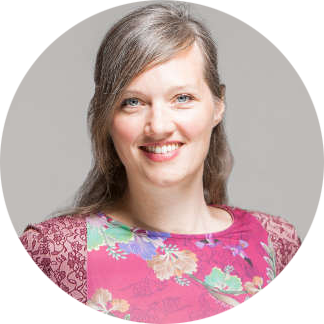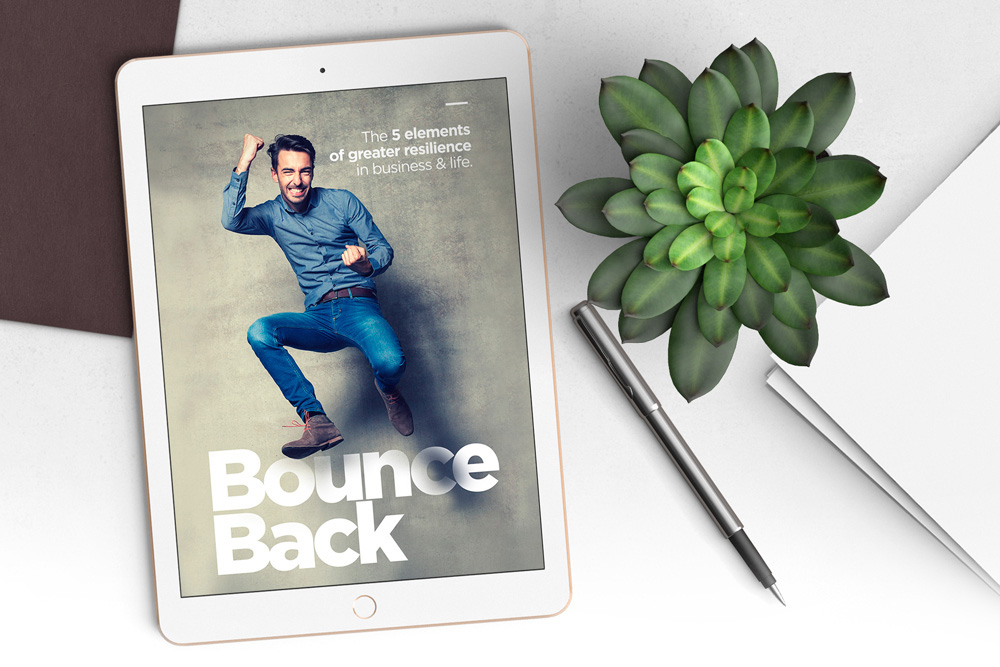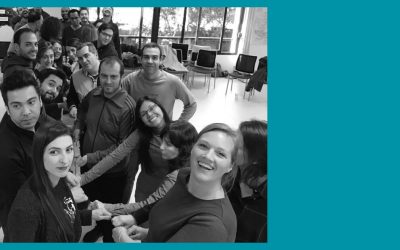How we manifest our emotional blockages in our body: A Gestalt Perspective
Take our free assessment!
Countless papers, articles and books have been written about the Gestalt approach to psychotherapy. This paper does not pretend to extend on scientific and empirical findings, but rather serves as a point of reflection, synthesis and possibly analysis of how resistance to the cycle of experience is dealt with from a psychosomatic, body-centred perspective.
After all, perspective is the base of Gestalt Psychology, which influenced among others the birth of Gestalt Therapy by Max Wertheimer (1880-1943) and Fritz Perls (1893-1970). Since then Gestalt Therapy has been influenced, formed and transformed by a number of contemporary philosophies and approaches that have enriched the therapy as such. This paper will not provide a discussion in terms of the validity of its history and influences but rather focuses on some of the main pillars of Gestalt Therapy as it’s taught in Western Europe today.
According to the current debates and findings in neuroscience, we can definitely confirm that humans have long been intrigued and fascinated with the connection between the mind and the body. Socrates & Plato argued that mind and body are separate entities (knowledge is born), whereas Aristotle saw mind and body as one (knowledge grows from experience & memories). In a world where demands are high, time flies within microseconds and cognitive knowledge and pragmatic solutions are highly valued in today’s society and professional landscape one still wonders, who is in charge?
It seems, at least measured by its socio-cultural importance that mind rules over the body. Hence, presumably thought is more powerful than emotion. But this would mean that a highly intelligent person would not encounter emotional challenges if the mind were able to “control” the body and the emotions.
Gestalt Therapy takes into account a person’s “whole experience”. In fact, coming from a background of Co-active Coaching myself, this is what incited me into this branch of psychotherapy in the first place. The idea, that the whole is greater than the sum of its parts. That a great part of our emotional wellbeing rests in the way we perceive the world, the way we make sense of the sensorial input (what we see, hear and feel in our bodies).
As in any historical period, today’s Zeitgeist creates a certain homogenous current in psychology, therapy and coaching alike that leads back to the importance of the body: the experience in the here and now, and the awareness of physical sensations, emotions, and thoughts. Overcoming obstacles and challenges in life relies on this awareness and ownership of one’s mechanisms that manipulate and obstruct the fulfillment of subjective needs. Put simply: what are your strategies of behaviour that create the situation that you are in? How conscious are you, and how “mindful” (i.e. aware of the here and now) are you?
In Gestalt language: This paper will focus on the emerging “figure” of how we react and block our needs, within the cycle of experience, and how the “obvious”, the phenomenological input can serve as information of the “ground” upon which this figure emerges. In other words, looking at practical case studies, “observing the obvious”, using the experience of the client in the here and now, through attention and awareness of the client’s “reality”, I will describe how we create physical tensions and blockages as a form of resistance to the inherent needs at stake.
Though debatable still, let’s assume, as Perls puts it
“… that the “mental-physical” or “mind-body” split is a totally artificial one, and that to concentrate on one either term in the dichotomy is to preserve neurosis, not to cure it.”
(Perls, 1973, p.53)
History on a shoestring, concepts, techniques and body.
Since there is extensive information available about the development and history of Gestalt Therapy I will only focus on some of the points relevant to this paper.
Gestalt Therapy arose out of the work of a group of German psychologists that worked in the field of perception. The main learning applied to today’s Gestalt Therapy is the notion that “man does not perceive things as unrelated isolates but organizes them in the perceptual process into meaningful wholes.” (Perls, 1973, p.2). Among other humanists, subjective experiences are then the primary focus to study human behaviour, honouring one’s subjective approach to defining and creating reality. In other words, your very own subjective experience of events that happen to you, only make sense to you in the context of your environment.
Moreover, a fairly new approach to psychotherapy in this historical context is the notion of integral holism; the client is not an object to be analysed, but rather a whole organism, a whole person. Hence, Gestalt emphasises on integration, thoughts, feelings, behaviours, body and dreams from the perspective of the client within her/his own subjective context.
Let’s have a look at what this means in terms of theoretical assumptions, methodology and the body’s place in all of this.

Beyond words: (Phenomenology)
One of my mentors said once: You waste all your energy in words. It took me a while to understand this statement, as coming from a background of Coaching and NLP I had given much importance to words, expression, and language. But the more I have allowed myself to connect to the “whole” of the being, the more I realise that language, though necessary, is at times limiting and a mere distraction if not a podcast of a well-rehearsed play that takes place in our mind every day. Repetitive, reciting the (un)pleasant past or projecting a fearful future, trying to control and to make sense of what has happened or is yet expected to take place.
It’s certain that one of the main pillars of Gestalt Therapy is awareness; and a huge part of awareness takes place in the mind, arguably so. However, Gestalt therapy focuses on awareness in terms of insight, self-acceptance, knowledge of the environment and at last the awareness of the responsibility of choices. The way to gather this information is tri-fold, through:
A) Concrete experience: our own subjective experience, on a physical and emotional level – like falling from a bike, experiencing the first kiss
B) Experimental experience: body, phenomenological, physical- like feeling the arousal of adrenalin when exercising, sweating, aching, etc.
C) Immediate experience: here & now; what is currently and widely referred to as “mindfulness”. Being aware of a physiological, sensory, emotional and cognitive level what is happening here and now. No fantasies, no imagination of nor future nor past.

Concepts & Techniques:
In terms of therapeutic techniques, the Gestalt therapy can’t be truly said to own any or have invented any, as in itself it has arisen out of different currents in psychotherapy. I guess one could say that Gestalt Therapy has allowed for an “attitude” in therapy, and provided some simple tools, that gain effectiveness in their very simplicity.
Firstly, an underlying assumption as mentioned before is that the organism (person) must be seen in its environment or its context as part of a constantly changing field, relational, in flux, interrelated and in process. This is termed in Gestalt as Figure & Formation (or Gestalt & Ground):
For example, when one feels “unease”, in terms of a simple need such as hunger, this need becomes the figure in a background of the current situation (which could be a meeting at work that you just can’t leave due to moral reasons).
Or, hitting the mid-thirties and all of the sudden most friends decide to become a parent; now you can see babies and pushchairs everywhere, it becomes “visible”, it’s creating a figure in your life. The circumstances than being the background of that figure which makes it apparent (your age, friends, etc.), that hasn’t always been like this (as certainly, you didn’t feel that need when you were 14 years old). If this is a need that is not fulfilled you may “suffer” from this until you conclude this Gestalt by either becoming a parent, or changing the figure, and focusing on something else in the background.
This work of perspective is practiced much by Coaching; change your perspective (figure), and/or look for resources to fulfill your need and conclude the Gestalt, which means it will dissolve into nothingness within its background.
Needs (figures) change with the environment (life, circumstances, age, culture, events, etc.) and create the meaning you assign to this dancing couple of figure and background. A clear figure/gestalt is formed on the basis of need, and its conclusion is the cure or resolution of suffering.
Now, without being or becoming aware of it, you will not see the figure as clearly as you need to, in order to address the need that it represents. In other words, as I tend to say to my clients, without being aware, you will always be a slave to yourself. You can’t make a conscious choice, neither to change the figure (the perspective/ point of focus) nor to allow for the background (life, events, circumstances) to change if you are not aware.
Secondly, Gestalt Therapy presumes that organisms (people) are self-regulatory or homeostatic. Hence, therapy is just an “aid” to guide and accompany the person to her/his own fulfillment of needs.
As techniques, we can attribute the following to Gestalt Therapy (though not inherent nor exclusive to it):
• Polarities- Top Dog and Under Dog (internal dialogue exercise)
• Taking responsibility for thoughts, action, behaviour and emotions
• Staying with the feeling, the experience
• Empty chair exercise: externalise “introjects” (limiting beliefs, rules and norms that one believes to be true), helping the client to get in touch with the other aspect of self.
• Exaggeration exercise, reversal or rehearsal techniques, playing projection, etc.
Cycle of Experience:
In order to conclude the gestalt, to fulfill your need, it is essential to not only be aware of your need but also of the ways you don’t allow yourself to fulfill it. In other words, how do you behave in order to get what you want, or to avoid it?
In Gestalt terms this is represented by the cycle of experience (also called: contact cycle or cycle of self-regulation), reflecting the mechanisms of avoidance. In essence, the (un)conscious need asks for a certain contact firstly with yourself, secondly with your environment, but you may exercise strategies in order to “avoid” this contact. After all, the person, according to the Gestalt Therapy is an organism of self-regulation. This means that a person knows how to restore equilibrium or contribute to growth and change, and this is represented in the graphic below.
Here are some examples of “unfinished business”:
- I want to be in a relationship
- My mother taught me I am worthless (Introjection)
- I imagine I will be rejected (projection)
- I want to talk to that person, but I get drunk instead (retroflection)
- I leave the party. (unfinished business)
We will come back to the cycle of experience in the next section that will exhibit practical case studies. Just for now, I want to point out that if we are not aware, nor take responsibility of our own needs we will always be caught in the strategy of avoidance such as “deflection” (I’m hurt by what you said or feel rejected, but don’t allow myself to express it, and rather make a superficial joke), or “projection” (I think my boss is awful and impolite, whereas I am projecting my own anger, or worse another person i.e. father figure and my related emotions onto him, without acknowledging my need for approval for example), etc.
When you become aware of the need, you have a choice to pursue means and ways to fulfill your need. Managing to do so, means that the Gestalt is closed, and a state of equilibrium is reached. Once one “issue” (gestalt) is closed, thus recedes from awareness (becomes ground), one will focus on another figure (issue) shortly after. This way a person “copes” with life, by attending these figures in a self-regulatory and homeostatic manner. (Perls, 1973).
The Body in psychotherapy (influences and techniques)
One of the most complex and fascinating systems on this planet is our body: A vast network of nerves, muscles, tissues, liquid, energy, gases, water and an admirable heat generator. We know a lot more about our bodies than ever before, can read and track symptoms, operate and cut, yet we are still pretty clueless when it comes to prevention of pain and disease. Well, “we” as in the western world. Other cultures are a lot closer to their bodies’ consciousness than we are, and some we are learning from, in order to get back in touch with our bodies.
Body-centred therapy has its own history, which I will not get into here in detail, but I think it is important to acknowledge the way that those therapies have “tinted” Gestalt Therapy today. As described before, Gestalt Therapy practices an “on experience focused” and an “in the moment” approach. And it does so by observing what’s happening in the body; bodily awareness or consciousness so to speak.
One of the founders of body psychotherapy was Wilhelm Reich, who argued that muscular tension reflected repressed emotions, what he called ‘body armour,’ and developed a way to use pressure to produce emotional release in his clients. Later Alexander Lowen in his Bioenergetic analysis and John Pierrakos in Core Energetics extended Reich’s findings, and as mentioned before argued that no words are as clear as the language of body expression.
Subsequently, many other approaches and branches of body psychotherapy have arisen, such as:
• Radix – Chuck Kelley
• Organismic Psychotherapy – Malcolm and Katherine Brown
• Biosynthesis – David Boadella
• Biodynamic Psychology – Gerda Boyesen
• Rubenfeld Synergy – Ilana Rubenfeld (studied with Perls)
• Body-Mind Centering – Bonnie Bainbridge Cohen
• Body-mind Psychotherapy – Susan Aposhyan
• Hakomi- Ronald Kurtz
• Dance Movement Therapy
• Rolfing- Ida Rolf
• Hakomi Experiental Psychology- Kurtz
• Unitive Body Psychotherapy
• Bioenergetic Analysis
• Client-Centered Verbal and Body Psychotherapy
• Integrative Body Psychotherapy- Jack Lee Rosenburg
• Body-Oriented Psychotherapy
• Somatic experiencing- Peter Levine
• Pesso Boyden system psychomotor therapy
This extensive though not complete list of body-centered approaches shows that the phenomenological approach, and importance of the here and now, as practiced by the Gestalt Therapy is directly interlinked with the repression of emotions, or rather the repression of needs. So, unconcluded figures/Gestalts can cause physical stress and tension, creating stagnant energy (often in form of pain) in the tissues as a reflection of the same figure/Gestalt of the person’s reality.
For therapy, this means that verbal language may be limited and limiting the process, as we do communicate our beliefs, thoughts and emotions also through nonverbal ways, such as gestures, postures, pace, tension or relaxation of our muscles, and other subtle somatic communications. Hence, to address this information within the body, movement, touch and breathing may be applied or exercised by the client in order to move forward. However, this is a subtle procedure, combined with verbal expression. The aim is not to produce a catharsis, but to gently move energy, liberate ideas and posture, creating awareness and bringing the client back in touch with his/her body. This way, the psychosomatic expression (physiological sensation such as pain) is not an “external” thing, or part of the body, but a representation of one’s “self” that is talking a non-verbal language.

Though attempts have been made, we still need a “body-dictionary” to understand its messages. The challenge here lies within the subjective experiences, and the danger to generalize symptoms. As argued before, the body is a complex system, and to claim that every stiff neck or a headache originates from the same psychological issue in different clients would repudiate the Gestalt assumption that every client has to be seen as whole, in his/her subjective and personal contexts, giving meaning to even her/his own physical pain by making it his/hers consciously. Hence, it’s an exploration of the relationship to one’s “self”, to one’s Body-Self.
Let’s have a look at real-life cases in the next section, in order to understand these concepts.
III. Case Studies on repression and body-centred therapy
“Gestalt therapy is founded on a theory of process. In Gestalt therapy, the most pervasive aspect of our functioning is our interaction with, or “contacting in”, the environment so as to find completion for our needs. …. The result is the achievement of self-regulation, a balance of the organism/environment field.”
(Kepner, 1999; p.90)
And it is the blockage or hurdle of achieving this balance that drives people to therapy or forms of guidance so that a client can find his/her way back to the natural process of self-regulation. Through a therapeutic process that goes beyond the words, we can address the predominant issue (figure) within the broader context including as much the mind as the body (ground). Thus, as a client, you can get “your body back” through expanded consciousness, that will allow you to connect to your need, so you will find constructive and healthy ways to fulfill that need. (Caldwell, C.)
In order to be able to fulfill your “self’s” need, it is crucial to “know”, i.e. be conscious of, what that need is. However, in our current societ, it is fair to say that we are quite distanced from our needs, just as much as we distanced from our body and emotions. A great deal of needs are dictated by society, family or economy (status quo, i.e. marriage, children, stable work, car, house, etc.) and may not always be linked to or an expression of the organismic need. Moreover, though we are conscious of our need, at times our behaviour may meet a hostile response [the urge to touch someone which is not reciprocal], or we have to delay the satisfaction of a certain need adjusting to the changing circumstances of the world [not eating (sleeping, moving, etc.) when hungry (tired, aching, etc.) due to social conventions at work or home] (Kepner, 1990).

Now, when we focus on the body, it becomes apparent how the need, the satisfaction or dis-satisfaction of it, has a physical response. May this need be conscious or not, and for that matter, its response of it, too. It has happened to me countless of times that someone said that he has no back pain or problems with tension. Yet, upon touch and exploration, all of the sudden becomes aware of the tension accumulated. If one is not conscious of how tension accumulates in the body, I tend to wonder in how far this person is conscious of other needs? After all, the body has been described as a canvas or temple that displays the curves and edges of one’s emotional landscape. As Perls puts it:
“A person who has lost the ‘feel’ of himself…cannot expect his ‘self-regulation’ (appetite) to function properly.”
(Perls, 1947/1969, p.45)
In other words, if you are not aware of a need it is likely that you will not fulfill it, hence repeat patterns and behaviour that result in frustration and possibly the formation of a physical “armour”, in Reich’s words.
Speaking of technology, make sure you take advantage of social media. Why not set up a private Facebook page or a LinkedIn group that focuses on employee well-being? If you give people a community forum, they’ll encourage each other and provide their own motivation.
Peter’ story
For example, a former client of mine, let’s call him Pedro/Peter, claimed to suffer from a pain in his chest. Upon discovery he told me that it was a sensation of pressure, combined with heat that would increase in certain situations, create a peak that paralysed him so much that he would not be able to work for a day or two. Pedro/Peter said that he had to retreat from the world, and simply “wait” for it to pass. Over the years he had tried several therapies, coaching and NLP but hadn’t progressed much. After only the first session, when connecting to the body, through breathing exercises and soft touch around the diaphragm, Pedro/Peter “connected” to the sensation fully for the first time.
This in fact, is one of the essential elements of a Gestalt process: to focus long enough on the client’s body so he can become aware of its sensations to the extent that it allows him to “connect” to the underlying need. In other words, to move from a cognitive insight towards awareness of a holistic, body integrated experience and to give it equal credit. In Pedro/Peter’s case, he connected to himself consciously and was guided to and by his physical sensations, so that he encountered feelings that were stored in that area. Not only feelings, but also visions, memories and voices came to him in relation to his dad who died 15 years prior to this moment. For the first time after his father’s death he connected to the grief and allowed himself to be sad, angry and loving all within the span of the same session. The sensation of oppression in his chest diminished, and he felt lighter and more connected to himself.
Upon analysis this client withheld his need to cry and feel this pain due to cultural introjects (i.e. beliefs such as: strong boys don’t cry), using strategies of deflection (being Mr. Nice Guy, always smiling and joking) and desensitization (analysing his situation form the cognitive, mental level without allowing himself to connect to his body and emotions). Often in practice clients “think or believe they are feeling” (Kepner, 1990), as if they could or had to “know” rather than to trust that the “in the moment experience” of their body could provide sufficient insight to the emotions felt. If this happens we are talking “about” the feelings, rather than experiencing and transcending through them in the moment they occur.
I believe that the work of completing the Gestalt, or to gain fulfilment and what people call “resolution/ happiness”, is achieved by firstly re-connecting to our bodies, to the physiological and emotional experience in the here and now, and to distance ourselves from mental and social concepts that inhibit the required need to move into action. At this point, it is important to stress that Gestalt therapy “makes the distinction between armouring against sensations and feeling (structural desensitization) and armouring against mobilization and action (structural retroflection)” Kepner (1999). Chronic muscular tension can become over time structural into muscles and posture, so that parts of the body may not “be felt”, or be used as a storage for accumulated emotions and memories. Hence, as argued before, tension, pain and discomfort expressed by a client has to be looked at and most importantly experienced individually within the context of this client’s environment. In other words, another client with similar symptoms may not have suffered from the same cultural limiting beliefs nor would have suffered this kind of unexpressed grief, or on the contrary, may have dealt with similar issues quite differently.
Now in terms of dealing with this kind of resistance, the psychosomatic expression of not fulfilling one’s need, it is not only important to connect to the body, but also to “observe the obvious” in the here and now, without falling into the trap of analysis (as much the client as the therapist). Hence the organism, the body-self, can re-adjust itself and spontaneously move towards the completion of this gestalt.
In this case, the client managed to discharge stagnant emotions (catharsis), re-gathered consciousness of this body and emotions, opened to dreams and memories of his past he had long neglected but was now able to transcend, and allowed for a process that propelled energetic flow and progress. Only after a few sessions he reported to feel less of the symptoms, and more importantly now “understood” the messages of his body not as punishment (first he wanted to get rid of it, as in take it away from me!), towards integrating the sensations and learning that this is a way the body expresses and makes evident his underlying needs that are now becoming more and more conscious on a cognitive level.
Anne’s story
Anne came to therapy because she said she felt confused. She had always done want she wanted, was perceived as a strong, confident woman who traveled the world and only in her early thirties enjoyed good physical health. However, the confusion arose out of the frustration with the results she got from her actions. Anne used to say “I am doing everything I can, but I hit a wall each time.” And this applied to her love life as much as her professional one. This wall was basically her blind spot.
Before therapy she couldn’t see that she was caught in an unconscious Gestalt, a repetitive behaviour that was repeated hence delivering the same results. Her behaviour is not to be judged as good or bad, but rather it is important to observe that the very fact that it created a loop, apparently not “serving” her, resulted in discomfort, and in her case in anger. So, Anne would “project” her anger into the world: towards men, colleagues at work and in general who she considered “stupid” would get their fair share.
Beyond the mechanism of projection Anne also “retroflected” with unhealthy eating behaviour. This latter Gestalt, she was more aware of from the start; every time she’d get upset, instead of connecting to the emotion Anne chose to swallow it down, whatever the emotion, with food, drinks and the like. In fact, despite her strong character and “power woman” identity that she was attached to, she harmed herself and others, because she didn’t know what she needed in the first place. Anger and frustration of not getting what she wanted through her “actions” made her come to therapy. Where, along with very few other times in her life, she actually connected to emotions; Anne cried.
Claudio Naranjo once said, Gestalt Therapy works when you start laughing about yourself. This is what happened to Anne, who said after a while with a smile: “I actually have to pay money in order to cry”.
After a process that connected her to her vulnerability and her body, Anne came closer to her needs and understood what her pattern of the cycle of experience was. Almost each time she would get angry, she realised that something else was going on for her. Mostly, she was sad, or felt impotent.
Through breathing into it, connecting to the body (symptoms such headaches, stiff shoulders, bowel problems, clenching jaws) Anne learned how to transcend through the experience and respect her needs. Things like jealousy she had hardly ever felt before, fear that had no real reason made sense in the light of her own vulnerability that asked for (self)-care and compassion. Something Anne didn’t “think” had any value due to her socio-cultural context.
In fact, in one of the sessions, all it took was for Anne to observe what was going on while she was talking. Being bright and intelligent, the scenarios and issues were cognitively always very clear and “obvious”. Using that ability, we focused on the obvious that was going on then and there in the session: how are you breathing while you speaking? What sensations show up in your body? How do you move your feet, hands and mimics? What kind of tensions are apparent?
When things didn’t make sense, Anne would feel headaches. When she felt scared her tummy reacted. Among these and others she learned to integrate the body into her discourse, making it just as important as her “story” and letting it guide her in her daily life. This way, Anne slowly learned when to stop and say no. Rather than believing she could do it all.
As we said before, the body is a complex entity. Some symptoms and reactions only make sense in the particular context they were created in. And once one issue (Gestalt) is shed light upon and dissolves into the ground, another one shows up. This flux winding gives rise and fall to the different learning curves in a Gestalt Therapy process. To my clients, I tend to describe it like a spiral: we move along and up this spiral focusing on similar issues throughout life, but learning each time new insights, patterns and strategies of ourselves whose consciousness allows for resolute choices taken from a place of responsibility. And as one of my mentors used to say: We all learn in life, but the ones who chose the guidance of therapy move along quite a bit faster.
IV. Insights, Reflections & Challenges
Now, the cycle of experience is complex in the sense that is not linear. Several mechanisms can be activated in order to not fulfill a need. But why is that?
From the outside, it seems obvious that if one was to please any need, such as thirst and hunger, also on an emotional level, that we would all be a lot happier. This may be true, but the body has a memory of its own, too. Hence, previous experiences in the primary scenario (upbringing) may guide us unconsciously to a mechanism of prevention. Not only because there may be fear and pain, but most importantly because it is a homeostatic way to care for our (body-) self.
Moreover, this very resistance to contact then equals the “expression of one’s intrinsic being” (Kepner, 1990). Sometimes the pain or trauma experienced is too intense and has to be avoided, in order to function in life and move forward.
Another client of mine suffered from bullying in her younger years, an experience that marked her permanently in adult life. She would describe herself as shy, her body was skinny, and the way she used her body aimed at making her smaller, and tiny, occupying less space in a room or on a chair.
Connecting verbally to the experience of the childhood abuse was too intense for her, so we worked on the obvious: what was actually going on in the here and now. In this case, she’d keep up this facial mask, a constant smile to the extent that sometimes her face would start aching, turning into tension and headache (particularly in situations where she had to face others, i.e. be in contact with another person). Whilst working with this tension in one of the sessions, it turned out that her hands turned into fists. Her arms and fingers fired up with heat, energy, and tension; yet a tension that asked for movement, a movement of pushing back, of saying no, allowing for anger to rise as a form of self-defense and self-protection. This was one of the first times, she would allow her body-self to express anger and resistance, and use her own energy not to block herself but to propel it outward in order to put a limit and to say “no”.
Working with and integrating the body into therapy at times seems almost too “obvious”. There’s not always and necessarily a big “wow!” moment, particularly not to the observer who is outside of that body experience. A body-centred process is, on the contrary, a subtle one, and one that requires time and attention. Predominantly, the aim is to connect to the need that lies at times hidden beyond the resistance, the pain or stagnant muscle that inhibits movement and action. Whatever the learning form a body-centred experience I believe it to be important to connect this to one’s real day to day life, i.e. behaviours, beliefs, and actions. In this last example, the challenge for the client thus was to first notice her physical sensations, learn how to interpret tensions and heat, as a way to dissent and avoid contact (conflict) with the environment. And by doing so, by not saying no, subsequently said yes to whatever the other proposed or worse imposed.
However, it is easy to fall back into old habits, beliefs, and postures, as even though they may be uncomfortable, they have become the comfort zone over time. The question hence tends to be: what is more uncomfortable: avoiding confrontation or expressing your need and wants? We all get to a point when our comfort zones, created by the mechanisms of avoidance, start getting uncomfortable. And that’s usually the point when we realise that “something” has to change. And this thing is our “self”, the way we come to fulfill our needs and gestalts.
Along these lines, I believe it is important to point out some ethical issues. Some people have been alienated from their body due to traumas and abuses, and although connection can be created through movement and self-exploration, touch by the practitioner must be handled with care. Clients usually want a “quick fix” solution, “to get rid of the problem”; this would be like surgery, cutting out the part of yourself that you don’t want to see or deal with. The process of therapy, awareness, acceptation and thus healing is one that is integrative, holistic and compassionate in nature. Foremost, with yourself. It’s a journey packed with resistance and challenges, because if it were easy to do, you would have done so already. Body-centred therapy and Gestalt therapy offer a way to the client to get back in touch with his/her own needs and self-regulate.
However, it is fair to say that this approach has its limits, particularly in the light of pathologies such as schizophrenia. I will not get into detail of this, as again there’s much information available. It is important that as much the therapist as the client take responsibility in terms of the intensity of the work, and the ability of the client to integrate the awareness into his/her life in a pragmatic way. The aim is not only awareness but also to create change, own the experience and acknowledge your needs in a way that you feel comfortable to change your behaviour in a way that will serve you.

VI. Conclusion
As we have seen by looking at the different real-life cases, a person expresses her behaviors, beliefs and resistance to the expression of need and its attached emotion also through the body. Not only through the aspect of bod language, but as an expression being part of the person’s “wholeness”.
Upon reflection of this paper, I would like to call for at least awareness of these interrelations, if not challenge purely linguistic models and forms of therapy to extend into the somatic knowledge as a form of healing and self-restoration. However, in the Western culture, the body has not been playing an important role, at least not in terms of an expression of self. Rather we live in an era of an obsessed body-culture that uses its appearances as a form of personal branding, alienating ourselves from our bodies even more.
Nowadays, a cynical mind could argue that we buy parts of our bodies (teeth, breast, bums and even six-packs!) just as easily as cars, houses or other commodities whose aim it is to veil the need of the person’s organism. As we have seen before, not getting in touch with ourselves, avoiding contact with our needs and emotions may at first be a way to deal with “stress” , but is also a way to avoid contact to one’s need, which ultimately will result in an unfinished business, a Gestalt that is not closed. This then may create all sorts of physical symptoms in addition to the emotional ones as a way of the organism wanting to auto-regulate.
In the field of coaching, counseling and psychotherapy, and beyond, e can’t keep on neglecting and ignoring the body’s symptoms and ways to communicate. Actually, it’s funny how many laymen do know about this relationship and how the body reacts to certain stress factors, but how little importance and integration is allowed in day to day life, let alone at work and business. I hope that this paper will encourage the reader to step out of the shadow, to fully respect the body as a part of your “self”, and to allow you find ways to connect to it, in order to decipher its messages. This way, it’s certain that gestalts will be concluded faster and more efficient. In other words, pain, dysfunctions and psychosomatic symptoms can be greatly reduced and eliminated from the inside out.
After all, Gestalt therapy is about consciousness (cognitive as well as somatic), the here and now (of what is actually happening, rather that a memory or mental construct) and responsibility (taking a conscious action to change perspective or environment, in order to fulfill needs).

MAIKE STOLTE
Executive Coach. Consultant. Trainer. Facilitator.
Categories
Contact us

Burnout. COVID. New Normal: How to get yourself back into balance & recover!
By now, most of us share a similar feeling: we feel drained. For months now, we have been bravely facing the Covid-19 pandemic. I think it’s fair to say that it has taken its toll on us. No matter your context, you may have been dealing with the stress of the...
Relational leadership: Influence is trusting and being trusted
We are our relationships. When we foster positive relationships, we create positive environments, develop positive projects and bring positive change to the world. This power of relationships is the base of relational leadership, focused on the leader’s ability to...
Insights From Natural Leaders: With Yasmine Khater
We can always find inspiring natural leaders close to us! In this series of interviews, I’m talking to people who have touched my soul: small business owners, neighbors, friends & colleagues. Those who inspire me to spread the wisdom & insights of our common...




